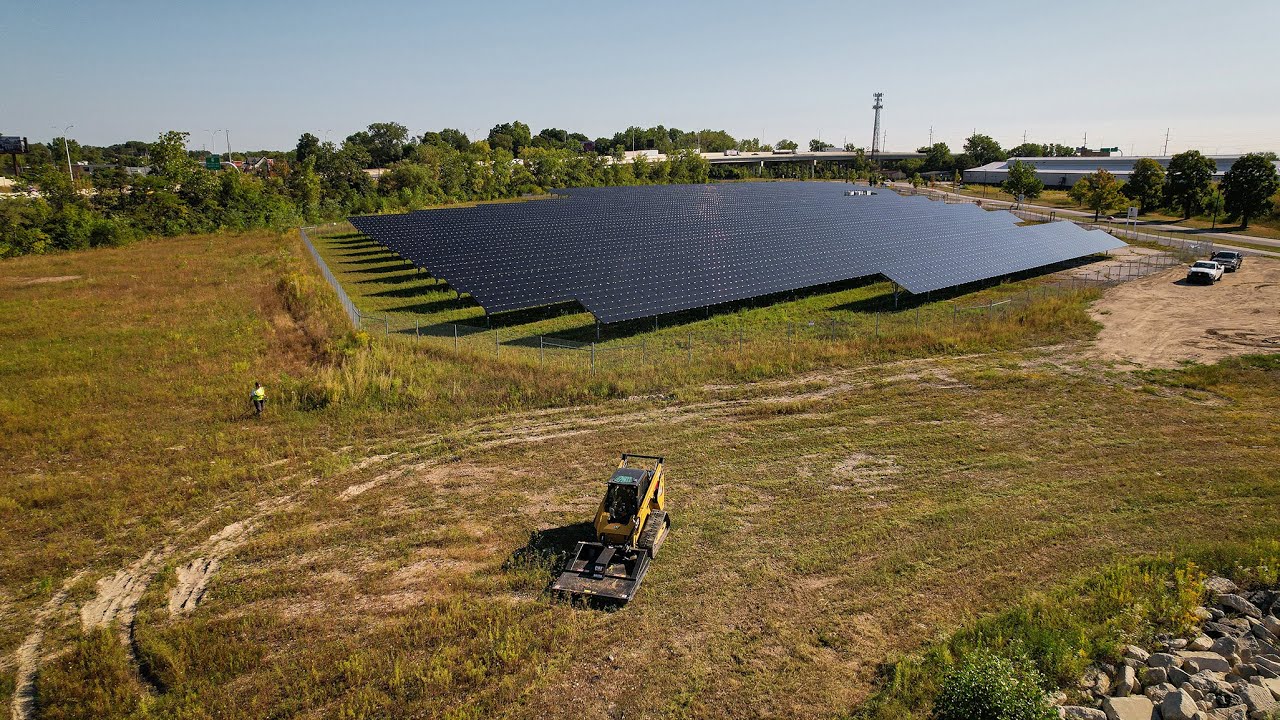- Understanding the Overland Solar Array Project and its goals within the context of sustainable zoo management and wildlife conservation.
- Exploring the technological advancements and environmental benefits of solar energy integration in zoo settings.
- Highlighting the role of renewable energy in promoting eco-friendly operations at wildlife conservation facilities.
- Examining the project’s impact on the future of energy usage in zoological institutions and wildlife reserves.
- Discussing the intertwined relationship between energy conservation and biology in enhancing sustainable practices in zoo management.
The Overland Solar Array Project represents a pioneering effort in sustainable zoo management. As zoological institutions strive to harmonize their daily operations with wildlife conservation goals, integrating renewable energy sources is crucial. This project stands as an exemplar in the adoption of solar technology to power change, facilitating energy-efficient practices that are both environmentally and economically beneficial. The initiative aims to reduce the carbon footprint of zoo operations while improving the conditions for animal care and visitor engagement.
The technological backbone of the Overland Solar Array Project lies in harnessing solar energy, a clean and inexhaustible power source. Solar panels convert sunlight into electricity, reducing reliance on fossil fuels. This transition not only cuts greenhouse gas emissions but also lowers operational costs, freeing up resources for other conservation efforts. Advanced photovoltaic systems, as implemented in this project, exhibit increased efficiency and durability, making them a viable option for zoological institutions looking to embrace sustainable practices.
Incorporating solar arrays in zoo settings offers multiple ecological advantages. These installations can serve as educational tools, demonstrating the importance of renewable energy to the public. Moreover, the reduced environmental impact aligns with conservation missions, showcasing a commitment to preserving wildlife habitats both locally and globally. By minimizing energy consumption and reducing waste, zoos can significantly decrease their ecological footprint.
The Overland Solar Array Project highlights the vital role of renewable energy in fostering environmentally conscious practices at wildlife conservation facilities. Solar power supports zero-emission operations, aligning zoo management with broader sustainability targets. This initiative not only benefits the environment but also enhances financial sustainability by reducing energy costs, ensuring long-term resource allocation for animal welfare programs and habitat restoration initiatives.
The forward-looking nature of the Overland Solar Array Project underscores its potential impact on future energy usage in zoological and wildlife contexts. As more institutions recognize the advantages of integrating solar technology, the trend toward sustainable energy solutions is expected to grow. This shift encourages other zoological facilities to consider solar implementation, potentially transforming energy landscapes across the conservation sector.
Energy conservation and biological sciences intersect significantly in sustainable zoo management. The Overland Solar Array Project exemplifies this synergy, promoting resource efficiency and supporting the well-being of housed species. Studies have shown that reducing environmental stressors, such as noise and pollution, can improve animal welfare. By harnessing clean energy, zoos contribute to healthier ecosystems and foster a more conducive environment for research and education centered around wildlife conservation.
At its core, the Overland Solar Array Project is more than just an investment in technology. It represents a commitment to safeguarding the environment and the species that inhabit it. This project leverages the scientific understanding of energy systems and conservation biology to achieve tangible improvements in zoo operations. As stakeholders collaborate to expand renewable energy efforts within the conservation community, the positive impacts on biodiversity and ecological health will undoubtedly amplify.
In conclusion, the Overland Solar Array Project is an innovative step toward cleaner, more sustainable practices in zoological environments. It emphasizes the need for a holistic approach to zoo management, one that integrates renewable energy with conservation goals. As these institutions continue to evolve, projects like this one pave the way for a future where wildlife protection and eco-friendly operations coexist harmoniously, benefiting both the planet and its inhabitants.
*****
Source Description
Toledo Zoo has partnered with Greater Toledo Community Foundation on the Overland Solar Array Project—a collaboration that aligns with our mission to conserve the natural world and connect our community to wildlife.
The solar array creates clean energy while eliminating 1,400 metric tons of CO2 emissions annually, equivalent to removing 327 cars from the road each year. Dana Incorporated buys the power generated, and in return, the Community Foundation turns these dollars into grants for the community.
Toledo Zoo joined the project and produced a documentary-style video that showcases this environmental success story of renewable energy positively impacting local neighborhood development and economic growth.
Wild Toledo is also part of the project, helping to beautify the space with a native prairie. The eco-friendly and low-maintenance installation will support local wildlife while allowing the community to connect with nature.
https://www.toledozoo.org/


